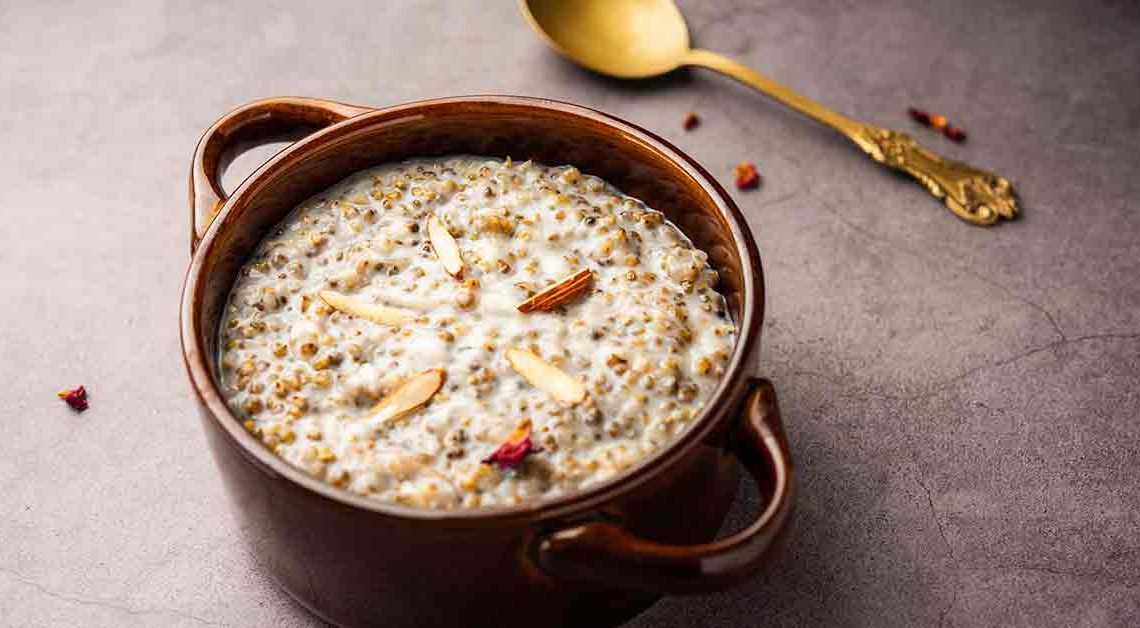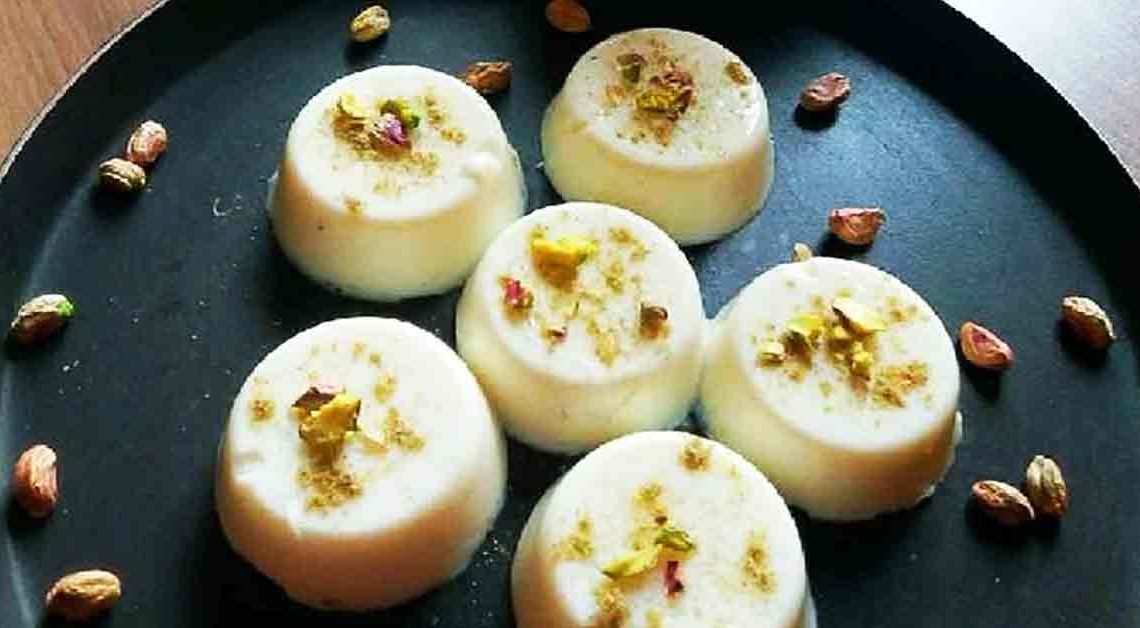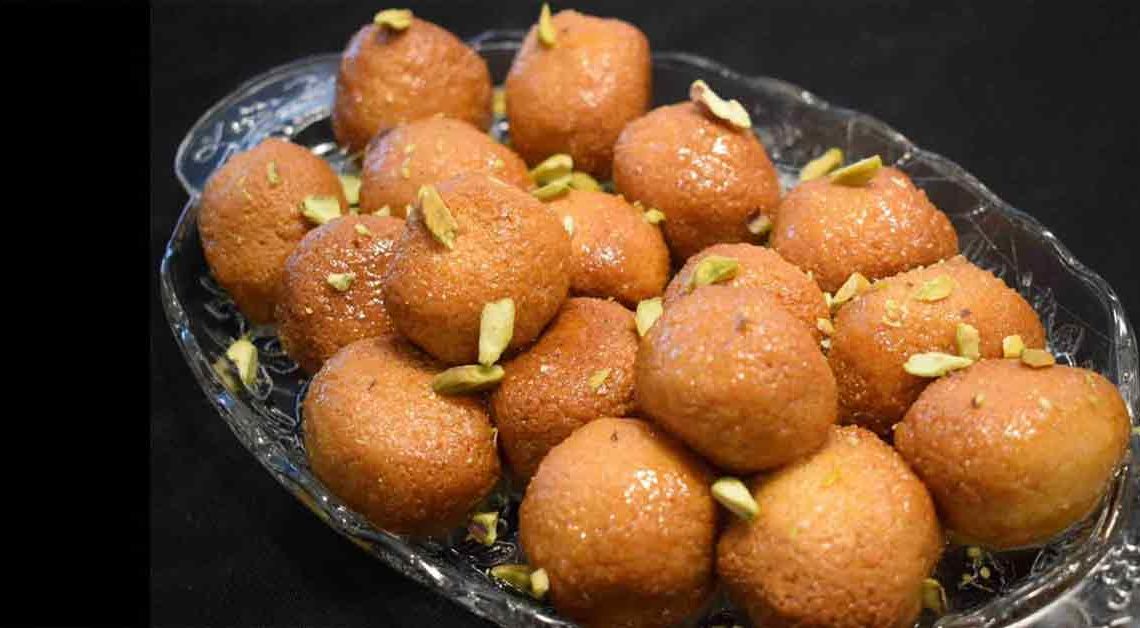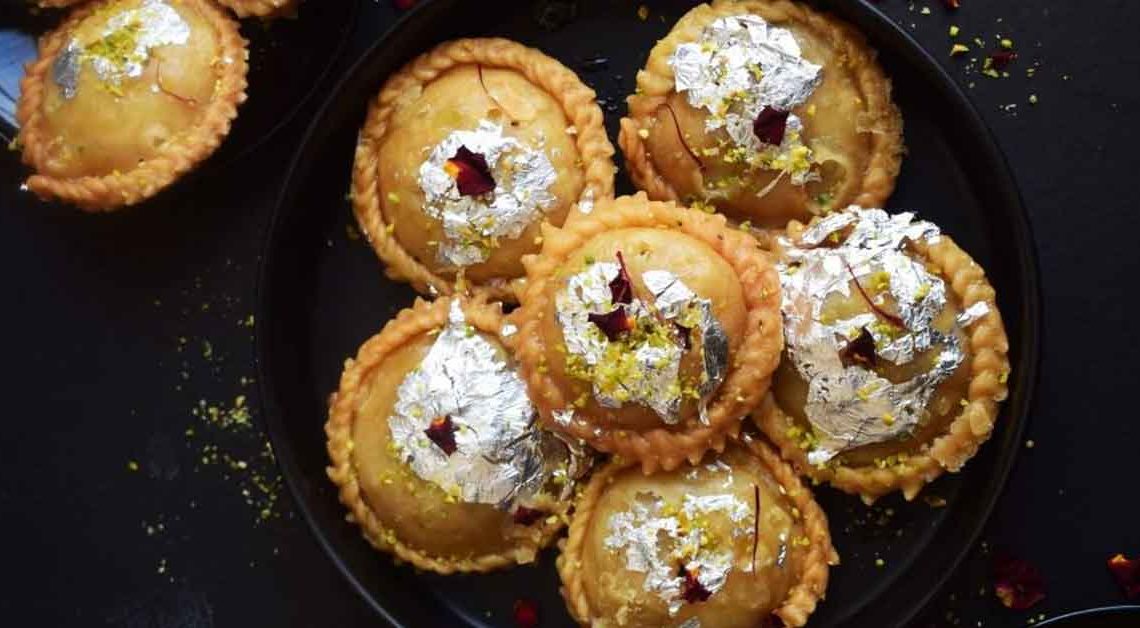Healthy Indulgence: Varagu-arisi Payasam

Are you ready to embark on a culinary journey that’s as nutritious as it is delicious? Welcome to our Mithainama, where we’re about to unravel the tantalizing world of Varagu-arisi Payasam, a South Indian dessert that’s sure to leave your taste buds dancing with joy!
Varagu-arisi, also known as Kodo Millet, is a small, gluten-free grain that has been a hidden gem in traditional Indian cuisine for centuries. It’s cherished not only for its health benefits but also for its incredible flavor profile that adds a unique twist to the classic payasam (rice pudding).
From the classic, velvety-textured payasam adorned with roasted nuts and fragrant cardamom to innovative variations featuring exotic ingredients, we promise to tickle your taste buds and inspire you to create magic in your own kitchen.
So, gear up for a delightful journey into the world of Varagu-arisi Payasam, where tradition meets innovation, and every spoonful is a taste of pure bliss. Get ready to embrace the golden grains and redefine your dessert game like never before!
Origin of Varagu-arisi Payasam
The origin can be traced back to the southern regions of India, particularly Tamil Nadu and Kerala. Payasam, also known as Kheer in North India, is a traditional Indian dessert that has been a part of Indian cuisine for centuries. It is often served during special occasions, festivals, and religious ceremonies.
Varagu-arisi, also called Kodo Millet, is one of the many millet varieties cultivated in India. Millets have been a staple food in India for thousands of years, and they have played a crucial role in the diets of various communities across the country. These grains are known for their nutritional value and adaptability to different climates, making them an essential source of sustenance for many.
The concept of substituting traditional rice with millets like Varagu-arisi in dishes like payasam is not only a nod to the rich agricultural heritage of India but also a response to the growing awareness of the health benefits associated with millets. Varagu-arisi is gluten-free and packed with nutrients, making it a healthier alternative to rice in desserts like payasam.
History of Varagu-arisi Payasam
The history is deeply rooted in the rich culinary heritage of South India, specifically in the states of Tamil Nadu and Kerala. Payasam, also known as Kheer in North India, has been a beloved dessert in Indian cuisine for centuries, with its origins dating back to ancient times.
The tradition of making sweet, creamy dishes with rice, milk, and jaggery (a traditional sweetener) can be traced back to ancient India. These recipes evolved over time to include various grains, including rice, wheat, and millets like Varagu-arisi.
Millets, including Varagu-arisi (Kodo Millet), have been staples in Indian diets for thousands of years. They were widely cultivated due to their hardiness and adaptability to different climates. Millets were not only used as a primary food source but also incorporated into various dishes, including desserts like payasam.
In recent years, there has been a resurgence of interest in traditional and healthier ingredients. Millets, including Varagu-arisi, have gained recognition for their nutritional value. They are gluten-free, rich in fiber, and have a lower glycemic index compared to rice, making them a popular choice for health-conscious individuals.
Cultural Significance
It holds significant cultural importance in the culinary traditions of South India, particularly in the states of Tamil Nadu and Kerala. Its cultural significance can be understood through several aspects:
Religious and Ritual Significance: Payasam, in general, is considered a sacred and auspicious dish in South India. It is often prepared as an offering to deities in temples and homes during religious ceremonies, festivals, and special occasions.
Festive Celebrations: It is commonly prepared and served during major South Indian festivals like Pongal, Onam, Navratri, and other harvest festivals. It plays a central role in the feasts and celebrations that accompany these occasions.
Health and Well-being: In addition to its cultural significance, Varagu-arisi Payasam has gained prominence due to its health benefits. Millets like Varagu-arisi are known for their nutritional value, being rich in fiber, vitamins, and minerals.
Where is Varagu-arisi Payasam Famous?
Varagu-arisi Payasam, made with Kodo Millet, is primarily famous in South India, particularly in the states of Tamil Nadu and Kerala. These regions have a strong culinary tradition of using millets in various dishes, and payasam made with Varagu-arisi is no exception. Here’s why it’s famous in these areas:
South India has a rich tradition of using millets like Varagu-arisi in its cuisine. Millets have been a staple in the diet of South Indian communities for centuries. Payasam is a cherished dessert in this region, and the incorporation of millets into it reflects the region’s culinary heritage.
Payasam, in general, holds immense religious and festive importance in South India. It is commonly prepared as an offering to deities during temple rituals and festivals. Varagu-arisi Payasam is prepared with the same reverence during special occasions and celebrations.
Interesting Facts and Trivia
Varagu-arisi Payasam, made with Kodo Millet, is a fascinating and nutritious dessert with a rich history. Here are some interesting facts and trivia related to this delightful South Indian dish:
- Varagu-arisi (Kodo Millet) is highly nutritious. It is gluten-free, rich in dietary fiber, and packed with essential nutrients like iron, calcium, and B vitamins. This makes Varagu-arisi Payasam not only delicious but also a healthier dessert option.
- Varagu-arisi Payasam is a must-have dish during South Indian festivals such as Pongal, Onam, and Navratri. It plays a central role in the feasts and celebrations that accompany these occasions, bringing families and communities together.
- As people become more health-conscious, there is a growing interest in millets like Varagu-arisi. Its low glycemic index and nutritional benefits make it an ideal choice for those looking to maintain a balanced diet.
- Millets like Kodo Millet have gained international recognition for their health benefits and sustainable cultivation. This has led to increased global interest in dishes like Varagu-arisi Payasam.
- In many South Indian households, Varagu-arisi Payasam is still prepared using traditional methods, such as slow-cooking it in large brass vessels. This enhances the flavor and aroma of the dish.
Did You Know?
Enjoying a bowl of Varagu-arisi Payasam not only satisfies your sweet cravings but also offers a plethora of health benefits?
- Varagu-arisi (Kodo Millet) is packed with essential nutrients like iron, calcium, and B vitamins. When used in payasam, it becomes a delightful way to incorporate these nutrients into your diet.
- If you’re sensitive to gluten or have celiac disease, Varagu-arisi Payasam is a wonderful gluten-free alternative to traditional rice-based desserts.
- Millets like Varagu-arisi have a lower glycemic index compared to rice. This means they release sugar into the bloodstream more slowly, helping to maintain steady blood sugar levels.
- The fiber in Varagu-arisi Payasam helps control appetite and may assist in weight management by promoting a feeling of satiety.
- It’s a good source of calcium, crucial for maintaining strong bones and teeth.







